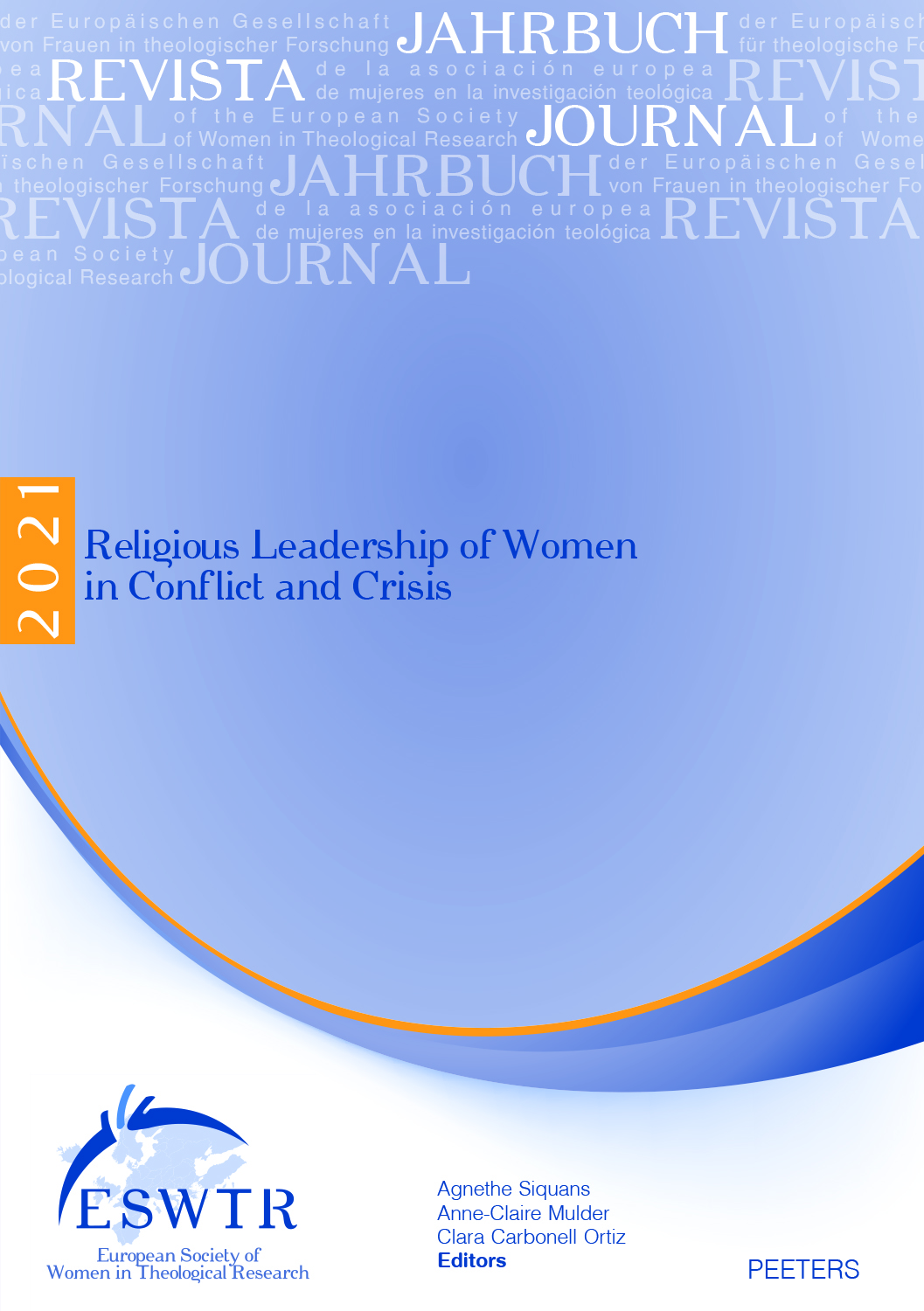 previous article in this issue previous article in this issue | next article in this issue  |

Preview first page |
Document Details : Title: She who is ... Invisible? Subtitle: A Glimpse of the Mothering God in the Church of England's Eucharistic Prayers Author(s): BROOKS, Bess Journal: Journal of the European Society of Women in Theological Research Volume: 28 Date: 2020 Pages: 85-107 DOI: 10.2143/ESWTR.28.0.3288483 Abstract : This article contends that, when we think of regimes of (in)visibility, we should begin with God and, specifically, how we describe God in public worship. The essay highlights the invisibility of female aspects of God in the current Church of England (CofE) Eucharistic Prayers. There is a single reference to God as mother in Prayer G and the author argues that the inclusion of this reference is characterised by defeminisation: that is, the masculine aspect of something dominates to the extent that the female aspect cannot manifest. The author suggests that defeminisation occurs at three levels: in the historic dominance of the Father metaphor as a way of describing God, in the lack of value placed on feminist scholarship in the CofE General Synod debates about Prayer G, and in the inadequacy of the mother reference itself. The mother God, as depicted in Prayer G, does not feed her children, unlike the father God in Prayers B, E, and F. The author suggests that future revisions of CofE Eucharistic Prayers should increase the visibility of female aspects of God. The article is set within the overall context of Gail Ramshaw’s hermeneutical approach to liturgy, YES-NO-YES, and her concept of liturgy as primary speech. Dieser Artikel macht geltend, dass wir, wenn wir an herrschende Systeme von (Un-)Sichtbarkeit denken, mit Gott beginnen sollten und besonders daran, wie wir Gott in öffentlichen Gottesdienst beschreiben. The Beitrag hebt die Unsichtbarkeit der weiblichen Aspekte Gottes in den gegenwärtigen Eucharistischen Gebeten der Church of England (CofE) hervor. Es gibt einen einzigen Bezug auf Gott als Mutter im Gebet G und die Autorin argumentiert, dass die Einbeziehung dieses Bezugs von De-Feminisierung gekennzeichnet ist, d. h. der männliche Aspekt von etwas dominiert so sehr, dass der weibliche Aspekt nicht sichtbar werden kann. Die Autorin weist darauf hin, dass De-Feminisierung auf drei Ebenen stattfindet: in der historischen Dominanz der Vatermetapher als eine Weise Gott zu beschreiben, in der fehlenden Wertschätzung der feministischen Forschung in den Debatten der CofE-Generalsynode über Gebet G und in der Unangemessenheit des Bezugs auf die Mutter selbst. Die Mutter Gott, so wie sie im Gebet G dargestellt wird, nährt nicht ihre Kinder, anders als der Vater Gott in den Gebeten B, E und F. Die Autorin schlägt vor, dass zukünftige Revisionen von Eucharistischen Gebeten der CofE die Sichtbarkeit der weiblichen Aspekte Gottes verstärken sollten. Der Artikel ist im größeren Kontext von Gail Ramshaws hermeneutischem Zugang zur Liturgie, JA-NEIN-JA, und in ihrem Konzept von Liturgie als ursprünglicher Sprache verortet. Este artículo sostiene que, cuando pensamos en regímenes de (in)visibilidad, deberíamos comenzar por Dios y, específicamente, por cómo describimos a Dios en el culto público. El ensayo resalta la invisibilidad de aspectos femeninos de Dios en las oraciones de eucaristía de la actual Iglesia de Inglaterra (CofE). Hay una sola referencia a Dios como madre en la Oración G (Prayer G) y la autora discute que la inclusión de esta referencia es caracterizada por la desfeminización: es decir, el aspecto masculino domina hasta tal punto que el aspecto femenino no puede manifestarse. La autora sugiere que la desfeminización ocurre en tres niveles: en el dominio histórico de la metáfora del Padre como forma de describir a Dios, en la falta de valor dado a debates del Sínodo General de la CofE sobre la Oración G en la investigación feminista y en la inadecuación de la referencia a la madre en sí. La madre Dios, tal y como se la describe en la Oración G, no alimenta a sus hijos, contrariamente al padre Dios en las Oraciones B, E y F. La autora sugiere que futuras revisiones de las Oraciones de Eucaristía de la CofE deberían incrementar la visibilidad de aspectos femeninos de Dios. El artículo se ubica en el contexto general de la aproximación hermenéutica de Gail Ramshaw a la liturgia, SÍ-NO-SÍ y su concepto de liturgia como diálogo primario. |
 |


